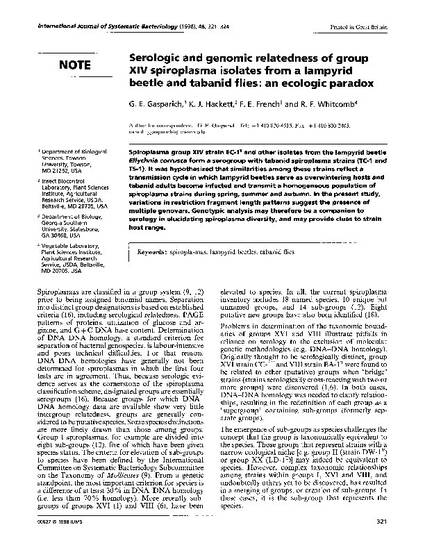
Article
Serologic and genomic relatedness of group XIV spiroplasma isolates from a lampyrid beetle and tabanid flies: an ecologic paradox
International Journal of Systematic and Evolutionary Microbiology
(1998)
Abstract
Spiroplasma group XIV strain EC-1T and other isolates from the lampyrid beetle Ellychnia corrusca form a serogroup with tabanid spiroplasma strains (TC-1 and TS-1). It was hypothesized that similarities among these strains reflect a transmission cycle in which lampyrid beetles serve as overwintering hosts and tabanid adults become infected and transmit a homogeneous population of spiroplasma strains during spring, summer and autumn. In the present study, variations in restriction fragment length patterns suggest the presence of multiple genovars. Genotypic analysis may therefore be a companion to serology in elucidating spiroplasma diversity, and may provide clues to strain host range.
Publication Date
January 1, 1998
DOI
10.1099/00207713-48-1-321
Citation Information
G. E. Gasparich, K. J. Hackett, F. E. French and R. F. Whitcomb. "Serologic and genomic relatedness of group XIV spiroplasma isolates from a lampyrid beetle and tabanid flies: an ecologic paradox" International Journal of Systematic and Evolutionary Microbiology Vol. 48 Iss. 1 (1998) p. 321 - 324 Available at: http://works.bepress.com/gail-gasparich/30/
